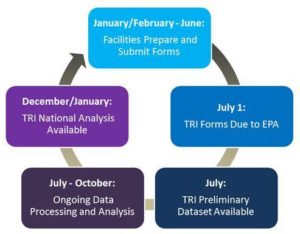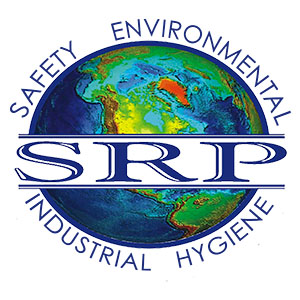Tier II (Right-To-Know Act) Annual Report
Facilities covered by Emergency Planning and Community Right-to-Know Act (EPCRA) requirements must submit a Tier II Hazardous Chemical Inventory Report to the Local Emergency Planning Committee (LEPC), the State Emergency Response Commission (SERC), and the local fire department annually. At SRP Environmental, we have the experience and capabilities to complete Tier II reports that are required annually by each state (some states like Louisiana, New Jersey, and California have more stringent inventory reporting requirements).
 Tier II reporting affects almost all facilities that use, manufacture, or store hazardous chemicals and materials as described by the Occupational Safety and Health Administration (OSHA) Hazardous Communication Standard referenced in 29 CFR 1910.1200.
Tier II reporting affects almost all facilities that use, manufacture, or store hazardous chemicals and materials as described by the Occupational Safety and Health Administration (OSHA) Hazardous Communication Standard referenced in 29 CFR 1910.1200.
Each facility must file an electronic submission Tier II report by March 1 of each calendar year.
SRP Environmental compiles material safety data sheets (MSDS) or safety data sheets (SDS) for every chemical considered hazardous under the Occupational Safety and Health Administration (OSHA) Hazardous Communications Standard, Sections 302, 304, and 313 of the Emergency Planning and Community Right to Know Act (EPCRA), the Comprehensive Environmental Response, Compensation, and Liability Act (CERCLA) and Section 112(r) of the Clean Air Act.
SRP Environmental files the necessary paperwork, prepares chemical inventory and location descriptions of all applicable chemicals for each client site, thereby ensuring client regulatory compliance.
Toxic Release Inventory Form R Annual Report
The Toxic Release Inventory (TRI) is an Environmental Protection Agency (EPA) program designed to compile data on toxic chemical releases and waste management activities reported annually by certain industries to support informed decision making at all levels of the industry, government, non-government organizations, and the public. Toxic chemical releases include air emissions, stormwater discharges, and waste water discharges. Waste management activities include hazardous waste disposal and non-hazardous waste disposals. The 40 CFR 372 regulation identifies over 600 chemicals that are defined in Section 313 of the 1998 Emergency Planning and Community Right-to-Know Act (EPCRA) known as the “List of Lists.” Facilities are required to report releases and other waste management of these specifically listed chemicals.
 Facilities that meet all three of the following criteria are subject to EPCRA Section 313 release and other waste management reporting:
Facilities that meet all three of the following criteria are subject to EPCRA Section 313 release and other waste management reporting:
- The facility has 10 or more full-time employees;
- The facility has a primary SIC code subject to reporting requirements
- The facility manufactured (defined to include imported), processed, or otherwise used, in the course of a calendar year, any toxic chemical in quantities greater than the set thresholds.
Facilities are required to submit TRI Form R or Form A reports annually to the EPA and designated State agencies. Reports are due every year on July 1 and cover the activities from the previous calendar year. The Toxic Release Inventory catalogues the types and quantities of toxins emitted throughout the year. SRP can help your company with your Toxic Release Inventory by preparing, filing, and coordinating communication with the proper regulatory agencies.
Toxic Substance Control Act Chemical Data Reporting
The Toxic Substance Control Act (TSCA) Chemical Reporting Data (CDR) rule requires manufacturers and importers of certain chemical substances included on the TSCA Chemical Substance Inventory to report site and manufacturing information for chemicals manufactured, processed, or imported in amounts of 25,000 pounds or greater at a single site. Additional information on domestic processing and use must be reported for chemicals manufactured in amounts of 100,000 pounds or more at a single site annually.
 Oil refinery and train tank cars[/caption]EPA uses the CDR, formerly known as Inventory Update Report (IUR), to support many health, safety, and environmental protection activities.
Oil refinery and train tank cars[/caption]EPA uses the CDR, formerly known as Inventory Update Report (IUR), to support many health, safety, and environmental protection activities.
Processing and usage information reported by operators from previous reporting years provides the EPA, the general public, and other government agencies data used to generate basic screening levels and exposure limits for workers.
This information constitutes a comprehensive source for industries and management personnel to prioritize chemicals and evaluate exposure risks to minimize potential human health and environmental effects.

 ">
">
 ">
">